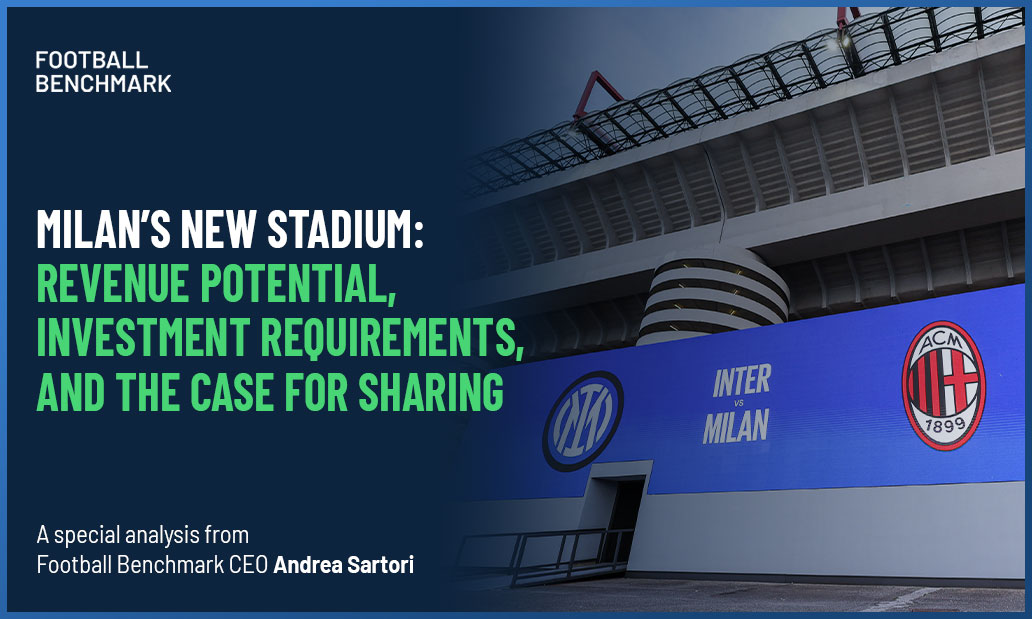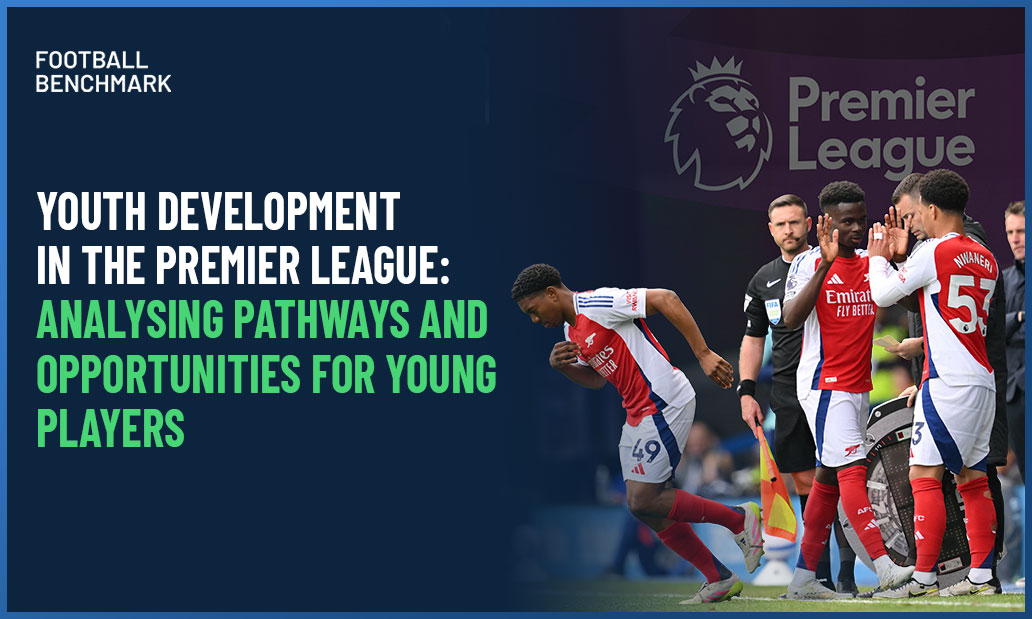
RC Strasbourg is emerging as one of Ligue 1’s most ambitious projects under new ownership. BlueCo’s takeover in June 2023 marked a decisive turning point, placing the club within a multi-club ownership structure aimed at driving growth through targeted investment, talent integration, and shared expertise.
This transformation comes against a backdrop of fragility across French football. Ligue 1 continues to face structural financial challenges, with the value of broadcasting rights plateauing and questions lingering over the league’s broader appeal. Most clubs are operating below sustainable levels, recording a combined post-tax loss of €164 million in 2023/24.
Within this environment, Strasbourg’s approach under BlueCo stands out. After years of steady mid-table finishes since their return to Ligue 1 in 2017/18, the club is now pursuing a more ambitious trajectory, aiming to close the gap with the likes of Lille and Lens - the group of clubs that in recent seasons have challenged Marseille and Lyon’s place among the league’s top sides. Early signs of change are evident: rising expenditure, a strengthened squad, and growing integration with Chelsea. Strasbourg’s evolution has quickly become a test case for whether the MCO model can accelerate competitiveness and long-term sustainability in a league under financial strain.
This case study examines how Strasbourg’s integration into BlueCo’s multi-club model is reshaping the club’s financial profile, sporting performance, and position within the wider Ligue 1 landscape.
Financial evolution under new ownership
From a financial perspective, Strasbourg’s trajectory illustrates the transition from stability to investment under BlueCo. After several seasons of controlled spending and steady revenue streams, the club’s accounts now reflect the ambition of a project entering an expansion phase. The shift comes at a time when many Ligue 1 clubs are cutting back, showing how the new ownership is instead choosing to invest to strengthen the club’s position.
Between 2022/23 and 2023/24, revenues remained stable, but costs rose by 24%, leading to a sharp drop in profitability. The club posted a loss of €14.2 million after tax in 2023/24, a year-on-year swing of 374%, marking a decisive break from the previous ownership’s conservative cost base. This downturn reflects deliberate, front-loaded investment in squad building and operational capacity aimed at accelerating growth.
Strasbourg has entered an investment cycle of short-term losses, driven by higher spending, which is expected to underpin longer-term value creation. The immediate outcome is reduced profitability, but the strategic intent is evident: to raise the club’s sporting ceiling and balance sheet strength through squad enhancement and participation in UEFA Club Competitions.
Squad development and competitiveness
The financial investment seen since 2023/24 has already begun translating into on-pitch results, with improved competitiveness leading to qualification for the UEFA Conference League in 2024/25. This progress is reflected in the sharp rise in squad value, illustrating how sporting development is now mirroring the club’s broader financial and structural expansion.
Since the takeover in 2023, Strasbourg’s squad market value has increased by 216%, from €85.5 million to €270.2 million. This sharp rise contrasts with most comparable Ligue 1 clubs, where squad values have stagnated or declined, with the exception of Marseille (+54%). Lyon and Lens all recorded reductions over the same period, while Lille’s growth was far slower. In just two seasons, Strasbourg have closed much of the gap in squad quality, reflecting both the scale of investment and the influence of BlueCo’s multi-club ownership model.
A key driver of this progress has been the link with Chelsea. Since the acquisition, ten players have moved from Chelsea to Strasbourg - seven on loan and two on permanent deals, Diego Moreira (€8.5m) and Mathis Amougou (€14.5m). Among the most influential arrivals have been Djordje Petrovic, named the club’s player of the season in 2024/25, and Andrey Santos. Mamadou Sarr also joined Strasbourg in 2023/24 before transferring to Chelsea in the summer of 2025 for €14 million and immediately returning on loan. This summer, Ben Chilwell, an established Premier League and England international, joined Strasbourg as a free agent following the expiry of his contract at Chelsea, bringing top-level experience to the squad.
These player movements have strengthened the squad and raised Strasbourg’s competitive level, with participation in UEFA Club Competitions this season to bring additional revenue to support continued investment.
Bridging the gap with Ligue 1’s established clubs
As Strasbourg continue to grow under BlueCo, the question is how close they are to the next tier of Ligue 1 clubs and what still separates them from established competitors such as Lille, Lens, Marseille, and Lyon. While sporting progress has been visible, particularly through squad investment and European qualification, the financial and structural gap remains significant.
The data highlight the scale of the challenge. Strasbourg’s total operating revenue and staff costs are substantially lower than those of Lille, Lens, Marseille, and Lyon, reflecting their smaller commercial base and the early stage of their investment cycle. Profitability also remains negative, contrasting with the more stable financial profiles of Lille and Lens, which operate at sustainable levels supported by consistent European participation.
Off the pitch, the disparities are equally evident. Strasbourg have the smallest social media following among the group and a more limited stadium capacity, with utilisation levels below those of their peers. These indicators underscore the longer-term nature of building commercial scale and fan engagement. Planned redevelopment of the Stade de la Meinau will be crucial in this regard, providing the infrastructure required to increase matchday income and modernise the club’s facilities.
Overall, the figures underline a club in transition - one investing heavily to bridge financial and structural gaps while operating from a smaller base. The challenge now is to convert short-term investment and on-field competitiveness into recurring revenues and a stronger commercial platform capable of sustaining long-term growth.
Building long-term value through investment and integration
Strasbourg’s trajectory under BlueCo illustrates how France’s current football landscape, marked by financial fragility and declining media value, offers significant space for new investors to elevate ambitious clubs. In just two years, Strasbourg has shifted from stability to expansion, with greater spending power, a stronger squad, and deeper integration within the BlueCo network. These developments have yielded clear results, including European qualification and a 216% rise in squad value.
However, the project’s progress has not been without friction. While sporting results have improved, parts of the fanbase have expressed concern over the club’s autonomy and long-term direction under multi-club ownership. These reactions underline the broader challenge of balancing performance-driven investment with local identity, particularly in traditional football markets like France.
Strasbourg’s evolution underscores both the potential and the limitations of the MCO model. The ability to share resources, talent, and expertise can accelerate competitiveness, but the path to financial self-sufficiency remains complex. As a relatively smaller brand operating in a strained domestic market, converting on-pitch progress into sustainable commercial growth will be the true test. In the French context, new ownership can elevate a club’s position within the hierarchy, but making that rise financially viable over the medium term remains far from guaranteed.
At Football Benchmark, we work with investors and clubs to identify and unlock long-term value across financial and sporting dimensions. Through our data-driven benchmarking, market intelligence, and strategic advisory, we support stakeholders in optimising investment strategies, including MCO structures, to achieve sustainable growth.


